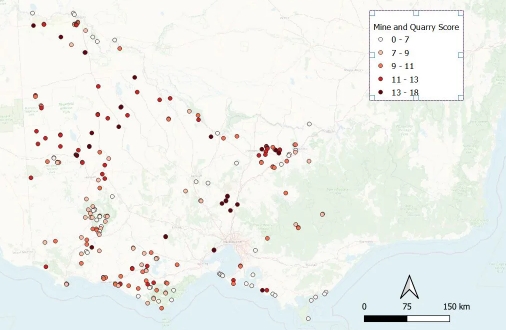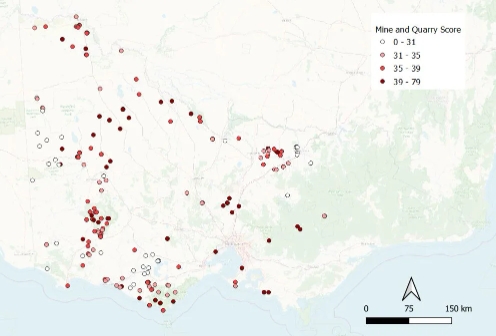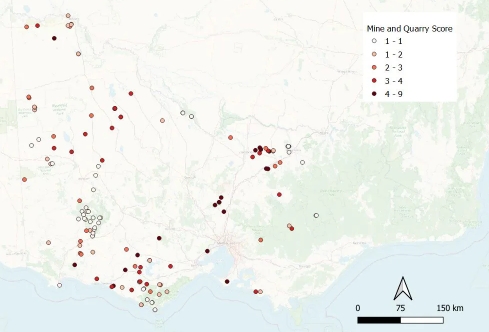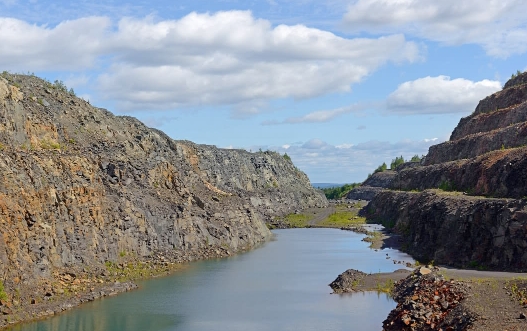Australia is grappling with the challenge of approximately 50,000 abandoned mine sites scattered throughout the country, posing various social, health, and environmental issues. Within Australia, the state of Victoria alone accounts for around 19,000 of these abandoned mine sites.
The majority of these mines originated during Australia’s prosperous gold-mining era, but their effects continue to impact communities to this day. Dust pollution and the contamination of natural waterways are among the significant challenges faced by the neighboring communities.
Nevertheless, there are prospects for certain regions to undergo revitalization while restoring value to abandoned mines. Recent legislation in Australia has emphasized the importance of progressive rehabilitation throughout a mine’s operational lifespan. However, the ultimate purpose of these mines after their active period remains uncertain. Specifically, what can be done with the numerous abandoned mines and quarries scattered throughout the country?
Unlocking Potential: Repurposing Abandoned Mines for Value Creation
Rather than considering abandoned mines as mere liabilities, there is a growing recognition that they hold significant potential if approached with the right strategies. Australia’s national policy now emphasizes the importance of valuing and maximizing the potential of these abandoned sites.
Opportunities for value creation include:
- secondary mining activities like reprocessing tailings to extract additional minerals,
- preserving and promoting the industrial heritage for tourism purposes,
- creating unique habitats to enhance biodiversity,
- conducting collaborative research to address contamination challenges and offer industry-wide solutions,
- and providing employment and training opportunities, particularly for regional areas and Indigenous communities.
These initiatives not only mitigate the negative impacts of abandoned mines but also foster sustainable development and economic growth.
Around the globe, abandoned mines have been successfully rehabilitated and repurposed to provide valuable support to local communities. Our dedicated research team has delved into the possibilities of rehabilitating mines for alternative end uses, such as utilizing them for water storage, flood retention, and serving as sites for municipal waste containment facilities.
Victoria, with its abundance of abandoned mines, is ideally positioned to take the lead in comprehensive mine rehabilitation efforts that will benefit communities for generations to come. By leveraging these opportunities, Victoria can showcase its commitment to sustainable practices and serve as a model for the rest of Australia.
Harnessing Abandoned Mines for Flood Retention: A Rehabilitation Solution
Addressing the escalating flood risk in the face of population growth and urbanization is a pressing concern. Rural communities and those on the outskirts of urban areas are particularly vulnerable to the impact of intense and frequent rainfall events.

The proximity of an abandoned mine presents an opportunity to redirect excess water, serving as a storage facility and effectively mitigating flood risks. By utilizing the mine as a retention basin, the catchment area and downstream regions can experience reduced vulnerability to floods. Additionally, this approach offers the added advantage of promoting biodiversity conservation through the restoration and creation of natural habitats.
Based on our analysis, we have identified two clusters of abandoned mines that are particularly well-suited for rehabilitation purposes. The first cluster is located north of Melbourne’s urban fringe in Kilmore, while the second cluster is situated in northwestern Victoria. These areas present promising opportunities for implementing effective rehabilitation strategies and maximizing the potential benefits of repurposing abandoned mines.
The selection of Kilmore as a suitable area for mine rehabilitation is largely influenced by the projected higher population growth in the region. Additionally, our analysis considers the soil suitability in northwestern Victoria, where sandy soils are prevalent. These sandy soils have the advantage of being able to absorb water more efficiently, making them well-suited for flood retention purposes.
Repurposing abandoned mines for water supply storage
Repurposing abandoned mines for water supply storage offers another valuable opportunity. A notable example of this is seen in Atlanta, USA, where an abandoned granite quarry is being rehabilitated for this purpose. The quarry, located approximately 8km from a water treatment plant, will effectively extend Atlanta’s water supply from five days to 30 days. This project not only addresses water storage needs but also provides recreational space for the local community, with the transformed quarry serving as a focal point.

Based on our analysis, two clusters of abandoned mines have been identified as highly suitable for rehabilitation. The first cluster is located north of Melbourne’s urban fringe in Kilmore, while the second cluster is situated in northwestern Victoria. These areas were chosen based on several factors. The anticipated higher levels of population growth in Kilmore make it a strategic choice, while the soil suitability in northwestern Victoria, characterized by sandy soils with enhanced water absorption capabilities, further supports its suitability for rehabilitation efforts.
Transforming waste management through rehabilitation
The increasing population in Victoria drives the need for more waste management facilities, but urban sprawl presents difficulties in finding suitable locations for municipal landfills.

Exploring abandoned quarries and mines as potential waste disposal sites could offer viable opportunities. The Environment Protection Authority of Victoria has published guidelines for the proper siting, design, operation, and rehabilitation of landfills, ensuring a best-practice approach throughout the entire lifespan of these facilities.
Applying the established framework, we conducted an assessment of Victoria’s abandoned mines and quarries to identify suitable sites that adhere to the minimum safety requirements outlined in the guidelines. These requirements include maintaining a minimum distance of 100 meters from surface water, 500 meters from any building or structure, and ensuring a two-meter separation from the groundwater table.
Based on our analysis, the Kilmore region emerged as a promising area with a selection of top-ranking sites. These locations could be considered as potential landfill sites to cater to the waste management needs of Greater Melbourne. However, it is important to note that conducting site-specific assessments and analyses, similar to those performed for water supply storage cases, would be necessary to ensure the long-term suitability and safety of these landfill facilities.
Addressing mine-site rehabilitation is becoming an increasingly pressing challenge that all states and territories must confront. Through our research, we have showcased a methodology for ranking and comparing opportunities, enabling better-informed decision-making in this area. By applying these approaches, we can strive towards more effective and sustainable mine-site rehabilitation practices.
Further research is required to enhance our understanding of how we can effectively repurpose these sites into versatile spaces that provide a wide range of ecosystem services, benefiting both local communities and the environment. By exploring innovative approaches, we can unlock the full potential of these areas and create sustainable solutions that promote ecological well-being and community resilience. Implementing appropriate strategies would not only enhance the existing regulatory framework for rehabilitation but also minimize the adverse effects of mining activities. This would offer better guidance for future rehabilitation needs and facilitate more comprehensive planning for the ultimate use of these sites. By striving for continuous improvement, we can ensure more effective and sustainable rehabilitation practices that prioritize environmental stewardship and long-term benefits for the surrounding communities.
*Dr. Yellishetty’s research project is conducted in collaboration with a team of experts including Melissa Truong, Han Chung Chia, Thomas Richards from the Department of Civil Engineering at Monash University, and Dr. Stuart Walsh, as well as Dr. Peter Bach, a Research Scientist from the Swiss Federal Institute of Aquatic Science & Technology. Together, they bring diverse expertise to the project and contribute to its comprehensive approach.

